NRAO eNews
Volume Vol#, Issue Iss#
Day# Month# Year#
NRAO eNews
Volume Vol#, Issue Iss# • Day# Month# Year#

Upcoming Events
NRAO at the Salt Lake City AAS | All times are MST.


Community Webinar Series: VLA/VLBA Call for Proposals Update for Semester 2022B
Jan 20, 2022 | Virtual
Semester 2022A Proposal Outcomes

The NRAO has completed the Semester 2022A proposal review and time allocation process for the Very Large Array (VLA) and the Very Long Baseline Array (VLBA).
For the VLA, the A and D-configurations will be available in the 22A semester and 226 new proposals were received by the 2 August 2021 submission deadline, including four large and twenty-six time critical (triggered) proposals. The oversubscription rate (by proposal number) was 2.5 and the proposal pressure (hours requested over hours available) was 2.0, both of which are similar to recent semesters.
For the VLBA, 50 new proposals were submitted. The oversubscription rate was 2.5 and the proposal pressure was 4.5, continuing a recent trend of higher pressure for the VLBA.
There was some demand for the time made available on space observatories through inter-observatory agreements, and fourteen proposals requesting time on HST, Swift, Chandra, or XMM-Newton (together with AUI/NRAO telescope time) were submitted.
Proposals submitted to the GBO were assessed through the same process. Sixty-four proposals for the GBT were received for the 22A Semester. The oversubscription rate is 2.4 and the proposal pressure is 1.3. For information on proposals for GBT observations see the GBO website.
The proposals were reviewed for scientific merit by nine Science Review Panels (SRPs) and for technical feasibility by NRAO staff. These reviews were completed in August – September 2021 and then considered by the Time Allocation Committee (TAC) during a remote meeting on 18-19 October 2021. The TAC – comprising the nine SRP chairs – was charged with recommending a science program for Semester 2022A to the Observatory Director. The recommended program was reviewed and approved on 2 November 2021.
A disposition letter was sent to the Principal Investigator and Co-Investigators of each proposal on 8 November 2021 and a TAC report containing information for proposers and observers, including statistics and telescope pressure plots, was released the same day. The approved science program for the VLA and the VLBA has been posted to the NRAO science website. The authors, title, abstract, and scheduled hours for each approved proposal can be accessed from the Proposal Finder Tool.
The Student Observing Support program continues to be available for NRAO observing programs and we encourage Principal Investigators of highly ranked VLA and VLBA proposals to consider applying for support.
The NRAO welcomes community feedback on the proposal review and time allocation process. Please provide such feedback via the Proposal Review department of the NRAO Helpdesk.
ngVLA Project News
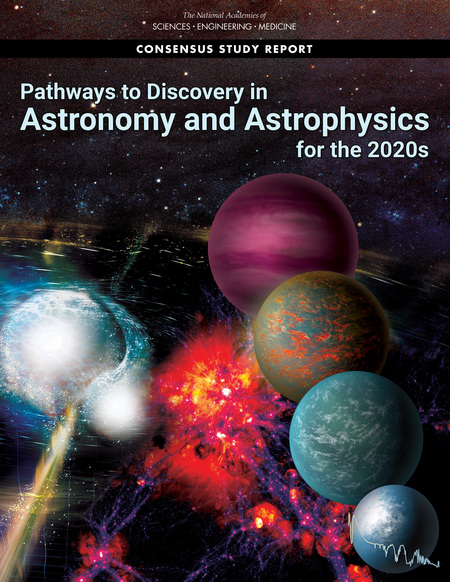
The National Academies Press
[click to enlarge]
ngVLA Science Advisory Council Changes
The next generation Very Large Array (ngVLA) Science Advisory Council (SAC) is the interface between the scientific community and the Project Office. Since the SAC's formation in 2016, its members have provided invaluable guidance and feedback on many aspects of the ngVLA, helping shape it and underpin its strong endorsement from the Astro2020 Decadal Survey.
With the Project now past this critical milestone, we have begun to reconstitute the SAC, starting with its leadership. It gives us great pleasure to announce that Brenda Matthews (National Research Council of Canada) and David Wilner (Center for Astrophysics | Harvard & Smithsonian) will serve as the new SAC Co-Chairs. They have been deeply engaged in the SAC and its Science Working Groups, and know the ngVLA well.
We wish to thank the founding Co-Chairs of the SAC, Alberto Bolatto (University of Maryland) and Andrea Isella (Rice University). Their leadership was incredibly effective and a primary reason for the ngVLA's success with Astro2020. To ensure a smooth Co-Chair transition, Alberto and Andrea will serve as ex-officio members of the SAC's Executive Committee, a steering body. The full SAC membership will be announced in due course.
ngVLA Community Studies Program Call for Proposals
As the ngVLA Project heads towards the completion of its Conceptual Design and starts to begin work on the Preliminary Design, we are pleased to announce this call for proposals, the fifth ngVLA Community Studies Program. The proposal receipt deadline is 14 February 2022, 23:59 EST.
Community Studies are designed to further develop the most pressing science questions that can be addressed by the ngVLA. As with previous rounds, we expect that all approved Community Studies will document their findings as part of a peer-reviewed journal article or ngVLA memo, and present their progress/final results at an appropriate science meeting, such as the January 2023 American Astronomical Society meeting. Consequently, we anticipate funding most formally approved proposals at a modest level to offset possible travel expenses, as well as for publication charges for papers expected to result from the study. We also expect to fund a small number of these Community Studies at a more significant level (up to $30,000 per award) through the ngVLA Community Studies Grants program.
Diagnosing Dust Grain Survival in FU Ori
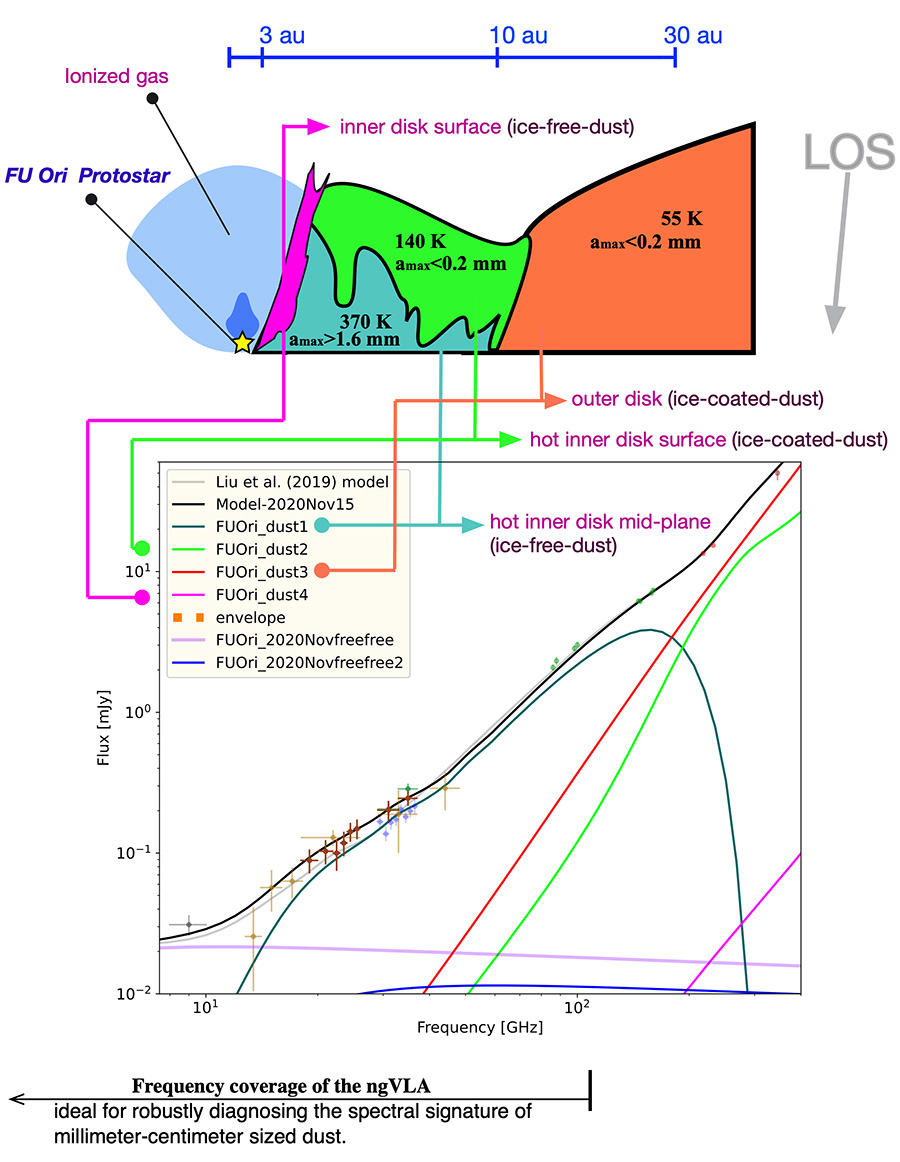
Schematic (top) to show how continuum observations (bottom) may diagnose the dust properties in protoplanetary disks. Adapted from Liu et al. (2021).
[click to enlarge]
It has long been considered that icy dust aggregates are very sticky. The rapid coagulation of the icy dust aggregates had been regarded as a potential solution to the long-term theoretical problem of how grain growth bypasses the bouncing and inward migration barriers, allowing the formation of centimeter-sized pebbles and kilometer-sized planetesimals (Okuzumi et al. 2012; Drążkowska et al. 2017). However, it is still difficult to understand how the Earth is so seriously deficient in water and carbon (see Bergin et al. 2015 and references therein for further discussion).
Comparing Jansky Very Large Array (VLA) and Atacama Large Millimeter/submillimeter Array (ALMA) photometric measurements over ~ 1-30 mm wavelengths of an outbursting young stellar object, FU Ori – where dry silicate dust may be present over a spatially extended area – Liu et al. (2021) found that dry silicate grains may be considerably stickier than previously thought (see figure). This result agrees with the latest analytical calculations and laboratory experiments which indicated that dry silicate dust can be as sticky as, or even stickier than, icy dust (Kimura et al. 2015, Gundlach et al. 2018, Steinpilz et al. 2019, Musiolik et al. 2019, Pillich et al. 2021).
To thoroughly understand the origin and the chemical composition of terrestrial planets and the Earth, it is clearly fundamental to investigate the radial dust surface density profile and the grain size distributions around the water snow lines (~ 170 K). In particular, to robustly test for the presence of icy or dry pebbles/chondrules and to map their spatial distributions, it is crucial to examine the spectral signatures of such "grown" dust at ~ 1-100 mm wavelengths. This is challenging with current observing facilities given that the water snow lines in the majority of protoplanetary disks are typically only around 1 AU from the host protostars (Mori et al. 2021).
The next generation Very Large Array (ngVLA) will uniquely be the facility to resolve the nearby (e.g., < 150 pc) protoplanetary disks at the desired wavelengths with sub-AU spatial resolutions. It is expected that the ngVLA data will anchor the most important aspects in the theories of terrestrial planet-formation.
Since 2015 the acronym ngVLA has appeared in 700+ publications indexed in the SAO/NASA Astrophysics Data System. This article continues a regular feature intended to showcase some of those publications. We are especially interested in showcasing work done by early-career researchers. The collection of showcase articles can be viewed online. Anyone wishing to volunteer to author a feature should contact Joan Wrobel.
Volunteers Needed to Serve on VLA, GBT & VLBA Science Review Panels

Members of NRAO’s Science Review Panels (SRP) play a very important role in identifying the Science Programs for these world-leading radio telescopes.
Being a reviewer could help you to:
- Learn what science other astronomers are interested in;
- Get a sense of what makes the most compelling proposals;
- Build your group of professional contacts and potential collaborators;
- Understand the review process for a major observatory.
If you are interested, volunteer to be an SRP member by filling out a simple form.
New Tutorials for ALMA Users
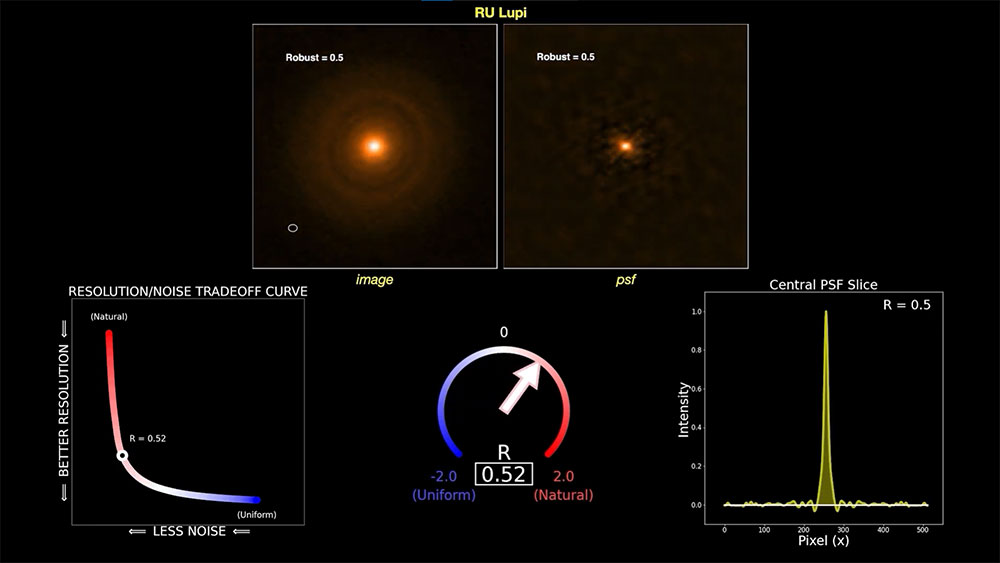
Sample ALMA tutorial content.
[click to enlarge]
The North American ALMA Science Center (NAASC) is pleased to announce a new YouTube channel for the ALMA Primer Series of video tutorials. The platform currently hosts several short video tutorials designed to explain aspects of Atacama Large Millimeter/submillimeter Array (ALMA) and interferometry, such as estimating sensitivities for proposals, understanding the largest angular scale, and the ins and outs of weighting schemes.
The site will be populated as well with short animations from the videos suitable for use in seminars and live training. New videos will be added from time to time.
We hope you will check out these videos and subscribe.
ALMA Program News
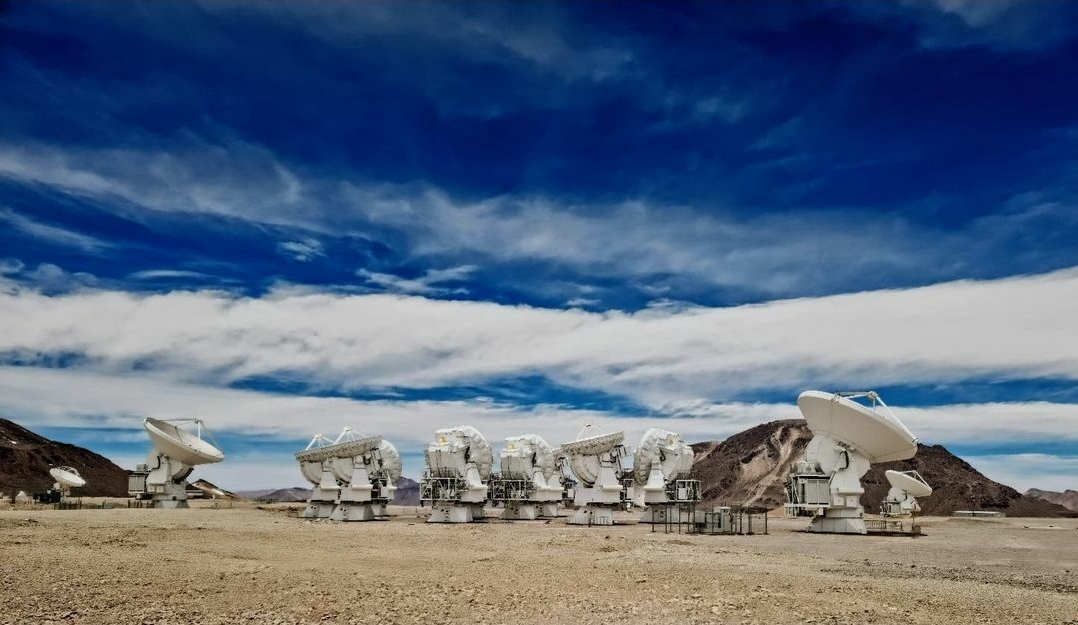
ALMA progresses with its Cycle 8 observations, on gradually contracting baselines.
[click to enlarge]
ALMA Observations
ALMA continues Cycle 8 observations. The array has shrunk from Configuration 6, C-6, with baselines from 15 to 2500m providing resolution of 0.31 arcsec at 100GHz, to C-5, with baselines from 15 to 1400m providing resolution of 0.54 arcsec at 100GHz. C-4 and C-3 follow, leading up to the February Maintenance Period. ALMA is following a normal operations schedule as the southern summer begins.
ALMA Proposals
The pre-announcement for the Cycle 9 Call for ALMA observing proposals is scheduled for 16 December 2021. Planned new ALMA capabilities will be announced then.
AAS239 ALMA Special Session: ALMA Status & Plans for Increased Capability
A Special Session will take place 13 January at 2:00pm MST (Room 155C) at the American Astronomical Society winter meeting. This Session will describe ALMA news, capabilities, and expectations for ALMA performance and science in the next few years, and plans for its upgrade in the 2030 timeframe. In that period, ALMA will complete its frequency coverage of the millimeter window–Band 1 (8.6mm-6.0mm; 35-50 GHz), which is being installed on the array now. Band 2 will follow, completing installation of the baseline ten bands.
A Band 6 upgrade, a part of the ambitious ALMA2030 Wideband Sensitivity Upgrade, will follow. This upgrade will improve ALMA's bandwidth and spectral line sensitivity in this most productive ALMA bands. Eventually, ALMA's bandwidth will be increased to simultaneously enhance its spectral range and continuum sensitivity, even as its line sensitivity is increased via receiver upgrades, an upgraded correlator, and improvements of the systems connecting them. Higher resolution imaging is being explored, both on ALMA's 5000m exceptional site and as part of extremely long baseline imaging arrays. ALMA Director Sean Dougherty will provide a status report, followed by Program Scientist C. Brogan on the upgrades, with scientific updates from A. Pope (U. Mass.), A. Leroy (OSU) and J. Huang (Michigan) highlighting current and future science.
Arizona Radio Observatory 2022A Call for Proposals

Next deadline for proposals is 23:59 MST on January 13, 2022.
Proposals will only be accepted as a single file in PDF format using the naming convention: LastName_FirstInitial_2022A_1.pdf, where the _1, _2 etc. should increment for multiple proposals from same PI.
Email the proposal to: astro-aroproposals@list.arizona.edu
The Arizona Radio Observatory (ARO) solicits proposals for the 10-meter Submillimeter Telescope (SMT) located on Mount Graham, Arizona, and for the ALMA Prototype 12-meter Telescope (12-m) located on Kitt Peak, Arizona for the period February 15, 2022 – June 15, 2022. Proposal candidates should submit up to three pages of scientific and technical justification (including figures, tables, and references) as well as the Proposal Cover Sheet.
The 10m SMT currently supports dual-polarization sideband-separating observations at 1mm (210 – 280 GHz SIS) and dual-polarization double sideband observations at 0.8mm (325 – 370 GHz SIS). The ARO 12m telescope currently supports dual-polarization sideband-separating observations at 4mm (69 – 90 GHz HEMT), 3mm (84 – 116 GHz SIS), 2mm (129 – 180 GHz SIS), and 1mm (210 – 275 GHz SIS). Both telescope control systems currently support dual-polarization observations for position-switched, beam-switched, and OTF observations. Proposal candidates should consult the ARO Equipment Summary and Status sheet for additional technical specifications.
ARO facilties are currently restricted to remote observing. Observers must supply fixed IP address(es) of the computer(s) that will be used during observing on their Proposal Cover Sheet. For further information about remote observing and other operational questions, please contact the ARO Software Engineer Natalie Gandilo.
Proposals will be reviewed by the ARO TAC and scheduling recommendations are made to the Director of Steward Observatory. Scheduling of recommended proposals will be done according to availability of the receivers requested with a minimum of 10% of the scheduled time to be available to the general astronomical community. Institutions (or individuals) outside of the State of Arizona that wish to acquire longer commitments of time through a limited duration agreement with The University of Arizona should contact Buell Jannuzi, Director.
Robert L. Brown Outstanding Doctoral Dissertation Award
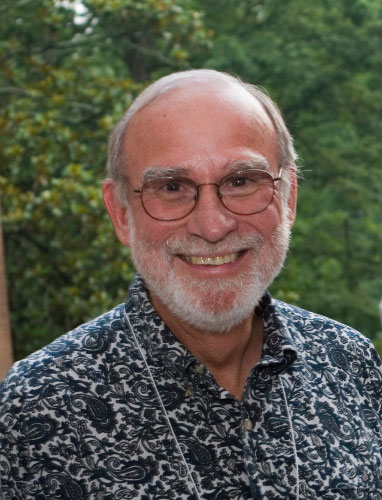
The Robert L. Brown Outstanding Doctoral Dissertation Award is administered by Associated Universities, Inc. (AUI) and the NRAO on behalf of Bob Brown’s friends and family to honor Bob’s life and career. The Award is given each year to a recent recipient of a doctoral degree from any recognized degree granting institution in the United States, and is substantially based on new observational data obtained at any AUI operated facility and considered to be of an exceptionally high scientific standard value and impact within and beyond the area of study.
NRAO / AUI is accepting applications for the Robert L. Brown Outstanding Doctoral Dissertation Award until 31 December 2021.
Details can be found at the Award website.
VLA Online Gift Shop now open!

We are very happy to announce that the Very Large Array online shop is now open for business! The shop contains a variety of VLA and NRAO goodies including posters, coffee mugs, shirts, and other assorted apparel! Including limited supplies of VLA 40th Anniversary merchandise! Your new favorite item is just a click away! So stop on by and see what's for sale!
Important Public Information Opportunities
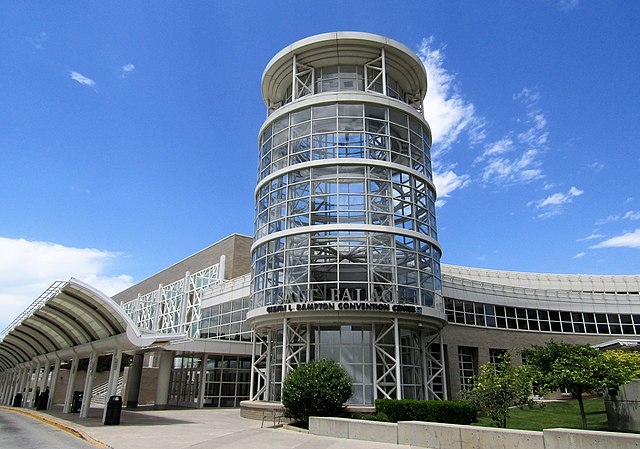
Ben P.L.
Salt Palace Convention Center in Salt Lake City
[click to enlarge]
Media training for AAS
AAS 239 begins in less than 30 days, and the media is excited to once again interact with scientists in person. But do you know the best way to concisely and accessibly share your results in a 5-minute conversation in the hallway of the Salt Palace? Amy and Dave are available for media training that will teach you to interact with any member of the media, whether they have an astronomy background or not, and how to cover the key points of your research, the results, and why it matters to the lay public in under 5 minutes. Limited individual training is available through Monday, 3 January 2022.
Contact for training:
- Amy C. Oliver, ALMA/NRAO, aoliver@nrao.edu
- Dave Finley, VLA/VLBA, dfinley@nrao.edu
Presentation: Effective Hallway Conversations with the Media
Tuesday, 4 January 2022 - 1pm ET
Zoom pre-registration is required.
Have a paper publishing between 5 January and 5 February? Have a paper you’ve recently submitted or that has been accepted with publication date unknown?
DON'T DELAY. Today is the day to reach out to Amy (ALMA) and Dave (VLA/VLBA).
Due to the AAS 239 Conference, requests for press support from NRAO received between 7 January and 17 January may not be reviewed until after January 18, and it can take between three and five weeks to fully process a press support package.
Recent Media Releases
From the Archives
Ellen Bouton

[click to enlarge]
About this month's photo: In Tucson, Arizona in February 1985, Bob Brown watches as John Payne and Betty Stobie work on one of the 12-meter receiver packages. There were four receiver "bays" that accommodated receiver packages like the one shown, usually one receiver "band" per package, i.e., the 1mm receiver band would have been housed in one of these packages. Thanks to Jeff Mangum for caption information.
From the Archives is an ongoing series illustrating NRAO and U.S. radio astronomy history via images selected from our collections of individuals' and institutional papers. If readers have images they believe would be of interest to the Archives, please contact Ellen Bouton.

